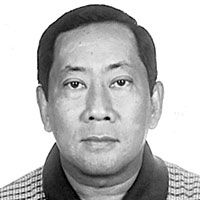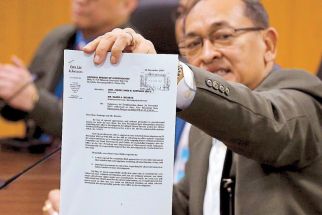Mt. Fuji: A picture-perfect pose

Before returning to Cebu this weekend, I’m off for a four-hour Shinkansen train ride to the City of Hiroshima and taking the last train ride back to Shinjuku in Tokyo. This is just a day trip, the equivalent of a tourist taking a day trip to Bohol and back to Cebu, except that the distance for this trip is almost from Cebu to Manila and back. But that is the technological marvel of the high-speed Shinkansen trains.
Talking about Japan’s technological prowess, if you checked the comfort rooms of the Mactan Cebu International Airport (MCIA) you will notice that we now use automatic flush toilets. This was invented in Japan more than 20 years ago and the Japanese haven’t stopped innovating. Today’s Japanese hotels and other establishments feature toilets with heated seats and automatic high-pressure water to clean your bottom and yes, even remote flush switches. This is simply due to the fact that the Japanese never sit on their laurels and get contented with what they have made. They always find ways to improve on their products. That is what drives their economy!
Japanese taxis have been using LPG more than 20 years ago. Now they even have digital read-outs and yet, their drivers are always courteous and will allow you to ride the taxi first and ask where you want to go. In the Philippines, usually the driver would ask you where you are going before they even let you in the cab! Sure, flag down in a Tokyo cab cost •710 which is about P350 but Japan’s economy, despite their admission that they are in a recession, is still as vibrant as it used to be.
While I was in Hakone with my brother Rene, my sister Adela and her husband Yuki, I learned a lot about how disabled-friendly the Japanese are. Perhaps this is putting to practice a reality that Japan’s population is aging fast and more old people are going places. When we got into the Shinjuku Train station, train officials immediately attended to the needs of my sister, offering to push her wheelchair to the elevator while we took the escalator to the platform.
When the train arrived, the train official first let everyone in, and then he placed a portable ramp between the train and the platform to make it easy for the wheelchair to get inside the train. They just don’t leave you until you are seated and ready for the trip. The same is true with their taxi drivers, who get out of the car and help secure the wheelchair in the baggage compartment. Disabled passengers also get a discount on the taxi fare and also the train fares and they also give the same kind of service and discounts with the cable cars in Hakone, including the pirate ship ride in Lake Ashi.
It was unfortunate that it was a very foggy day when we got to the Hotel Green Plaza in Hakone. We couldn’t see Mt. Fuji at all. So we spent the whole day riding the Okwadani cable cars looking at mostly nothing but fog. But the Japanese always prepare alternatives whenever Mt. Fuji refuses to show its face. So off we went to the Hakone Open-Air Museum, which includes a pavilion dedicated to the art of Pablo Picasso.
Our hotel had its own tourist attraction - a hot spring in its basement. In traditional Japanese style, we dipped butt-naked into the pool of very hot spring water. It was my first time to dip in water that hot. It was very uncomfortable at first but it turned out to be very refreshing. There were 30 other people in the two pools and we were the only foreigners.
Japanese culture isn’t prude; families often bathe together naked. Even in Japanese golf courses, the men’s shower is public, unlike what we have in at the Cebu Country Club or Alta Vista where we have shower cubicles for one person. In fact, in 7/11 or Am/Pm stores, pictures of nude women are placed beside other reading materials like the Japanese Manga comics. Nudity isn’t an issue to the Japanese.
By Wednesday, the fog lifted and although it was already almost winter cold when I woke up, I went out to the hotel grounds and there was Mt. Fuji, her foggy veil removed. She was picture perfect! My trip to Hakone and Japan was complete! However, hours later, clouds covered Mt. Fuji once more. But it was really a sunny day and so we took the cable car again and went down Lake Ashinoko and took a tourist ship decorated like a pirate ship across the lake.
Japanese trivia: They don’t have any Diet Coke in Japan. Probably because they work so hard, they don’t need a diet. But there is a Pepsi Nex Zero that has zero calories, but no Coke Zero. Lastly, if you always check the prices from Yen to Peso before you eat, you’ll end up eating crackers only! That’s Japan!
- Latest
- Trending





























